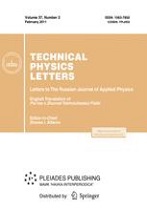|
This article is cited in 1 scientific paper (total in 1 paper)
Transformation of a separated turbulent flow in a conical dimple at the wall of a narrow channel and reduction in hydraulic losses as conicity increases
S. A. Isaevab, D. V. Nikushchenkoa, A. G. Sudakovb, N. V. Tryaskina, L. P. Iunakovc
a State Marine Technical University of St. Petersburg
b Saint-Petersburg State University of Civil Aviation
c Baltic State Technical University "Voenmech", St. Petersburg, Russia
Abstract:
A separated flow in a narrow channel with a conical dimple at the wall with an incline angle of $\theta$ is calculated based on the solution to the unsteady Reynolds-averaged Navier–Stokes equations (URANS) closed using the modified shear stress transport (SST) model. It is noted that a sharp transition from the periodic mode with two alternately changing vortices in dimples close to cylindrical shape ($\theta$ = 10$^\circ$ – 22.5$^\circ$) to modes with periodic low-frequency vibrations of inclined single-vortex structures at moderate angles $\theta$ (30$^\circ$ – 37.5$^\circ$) and to modes with steady vortex structures at angles $\theta$ larger than 45$^\circ$ is observed. The relative hydraulic losses at the channel segment with the dimple remain at a level of 1.23 – 1.24 as $\theta$ increases to $\theta$ = 45$^\circ$ and, then, rapidly decrease by almost 1.5 times to 1.16 at $\theta$ = 60$^\circ$.
Keywords:
conical dimple, narrow channel, intensification of separated flow.
Received: 18.01.2021
Revised: 27.02.2021
Accepted: 06.03.2021
Citation:
S. A. Isaev, D. V. Nikushchenko, A. G. Sudakov, N. V. Tryaskin, L. P. Iunakov, “Transformation of a separated turbulent flow in a conical dimple at the wall of a narrow channel and reduction in hydraulic losses as conicity increases”, Pisma v Zhurnal Tekhnicheskoi Fiziki, 47:11 (2021), 21–25; Tech. Phys. Lett., 47:8 (2021), 557–560
Linking options:
https://www.mathnet.ru/eng/pjtf4771 https://www.mathnet.ru/eng/pjtf/v47/i11/p21
|


| Statistics & downloads: |
| Abstract page: | 44 | | Full-text PDF : | 14 |
|





 Contact us:
Contact us: Terms of Use
Terms of Use
 Registration to the website
Registration to the website Logotypes
Logotypes








 Citation in format
Citation in format 
